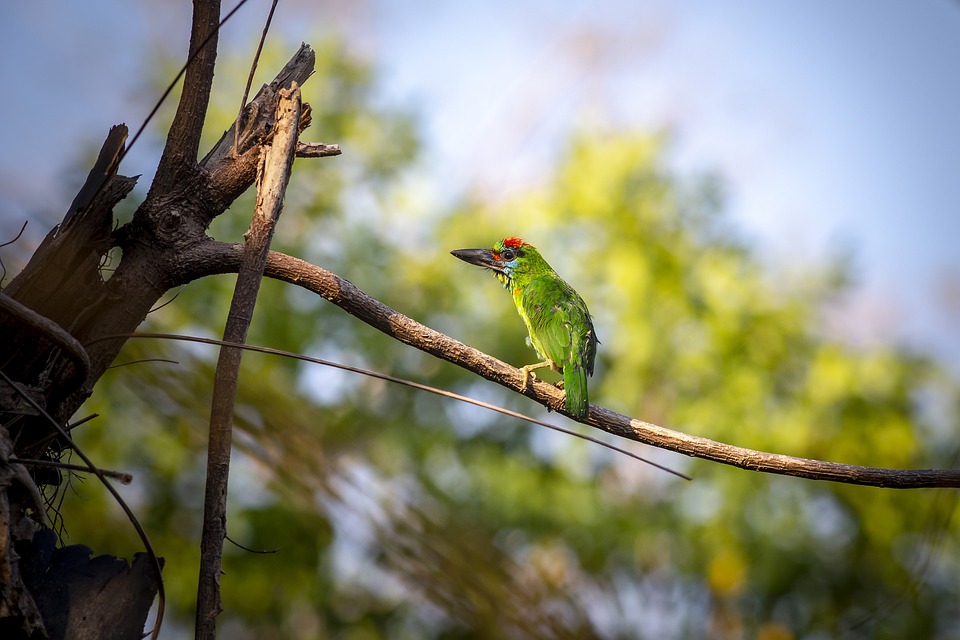Parrots are highly intelligent and social creatures that thrive on mental stimulation and interaction with their human companions. Recognizing signs of enthusiasm and eagerness in parrots is crucial for their overall well-being and successful training. In this article, we will delve into the various behaviors and body language cues that parrots exhibit when they are excited, engaged, and eager to participate. Additionally, we will address some frequently asked questions regarding parrot training.
Signs of Enthusiasm and Eagerness in Parrots
1. Vocalization: One of the most obvious signs of a happy and enthusiastic parrot is increased vocalization. Parrots may engage in cheerful chirping, mimicry, whistling, or even boisterous squawking when they are excited or eager to interact. Pay attention to the tone and intensity of their vocalizations as they can provide valuable insights into their emotional state.
2. Preening: Parrots are meticulous groomers, and when they are enthusiastic, they may engage in vigorous preening, often focusing on hard-to-reach areas like their head, neck, and wings. Preening is not only a way for parrots to keep their feathers in top condition but also a sign of comfort and contentment.
3. Active Body Language: When parrots are eager and enthusiastic, they tend to exhibit active body language. Look for signs such as flapping wings, hopping or bouncing, head bobbing, and tail wagging. These movements indicate their excitement and desire to engage in play or training activities.
4. Approachability: An eager and enthusiastic parrot will often display a higher level of approachability. They may lean towards you, stretch out their neck, or even extend a foot or wing to initiate contact. This behavior indicates a positive attitude towards interaction and a willingness to engage with their human companion.
5. Eye Brightness: A parrot’s eyes can provide valuable insights into their emotional state. When a parrot is enthusiastic and eager, their eyes will appear bright and alert. They may also focus their gaze on you or the activity at hand, indicating their keen interest and desire to participate.
FAQs about Parrot Training
Q1: How long does it take to train a parrot?
A1: The time it takes to train a parrot varies depending on the individual bird and the desired training outcome. Simple commands or tricks can be taught in a matter of days or weeks, while more complex behaviors may take months or even longer. Consistency, patience, and positive reinforcement are key elements in successful parrot training.
Q2: Can any parrot be trained?
A2: Yes, most parrots can be trained to some extent. However, the ease of training can vary between species and individuals. Some parrot species, such as African Greys and Cockatoos, are known for their exceptional cognitive abilities and trainability. It’s important to understand the specific needs and characteristics of your parrot’s species to optimize the training process.
Q3: What is the best way to motivate a parrot during training sessions?
A3: Parrots are highly motivated by positive reinforcement, which involves rewarding desired behaviors with treats, praise, or playtime. Find out what motivates your parrot the most, whether it’s a particular food item or a favorite toy, and use it as a reward during training sessions. Remember to keep training sessions short, fun, and engaging to maintain your parrot’s enthusiasm.
Q4: Are there any signs that indicate a parrot is not enjoying the training session?
A4: Yes, it’s crucial to pay attention to your parrot’s body language during training to ensure they are comfortable and enjoying the process. Signs of discomfort or disinterest may include fluffed feathers, aggressive behavior, attempts to escape, or ignoring commands. If you notice any of these signs, it’s recommended to reassess your training approach and seek professional guidance if needed.
By understanding and recognizing signs of enthusiasm and eagerness in parrots, you can create a positive and rewarding training experience for both you and your feathered friend. Remember to always approach training sessions with patience, empathy, and a focus on positive reinforcement. Happy training!









